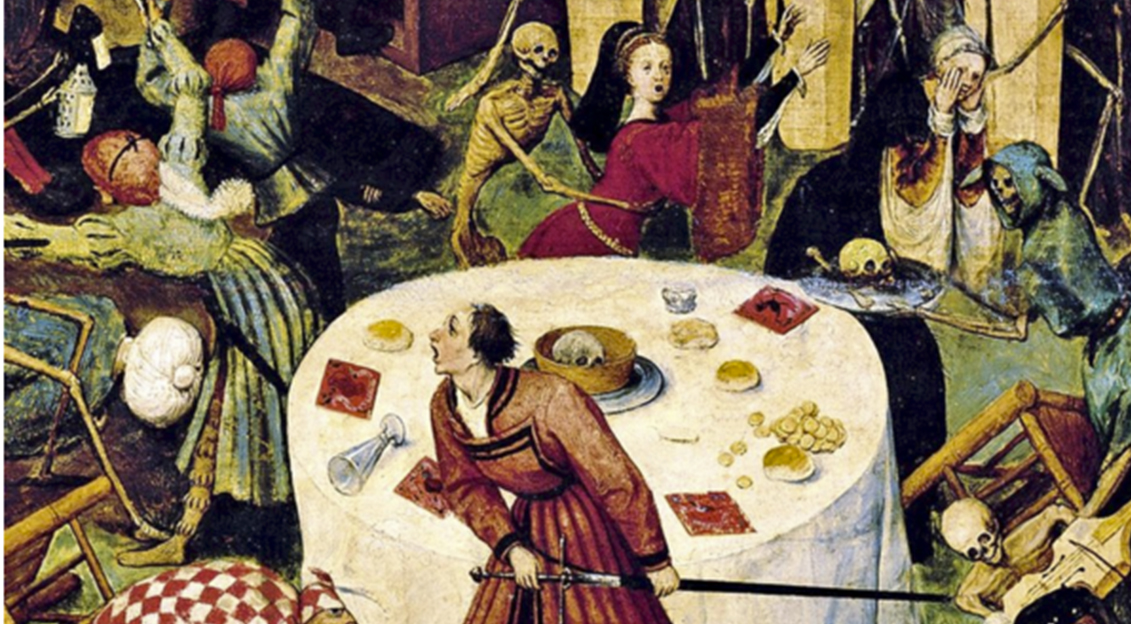
Four pandemics that changed the world
From smallpox to the Black Death and HIV/AIDS, humanity has seen its fair share of bad outbreaks of disease. We are still here.
When the World Health Organization (WHO) labeled the new COVID-19 a "pandemic", that is, a disease that is occurring all over the world at the same time, there were moments reminiscent of times of war: the deserted streets, supermarkets overwhelmed by hundreds of people scrambling for goods, and the constant media monitoring of the infection's progress — the number of sick and dead increasing daily.
Although our health system is not what it was in 1918, when the Spanish Flu wreaked havoc, nor will the coronavirus be as lethal as smallpox — the most deadly pandemic — some people will still make historical comparisons.
To keep you up to date with what's happening now and what's happened in the past, here's tour of the five most devastating pandemics that we've emerged from.
It has killed more than 25 million people worldwide, and although preventive treatments such as PrEP have been developed to reduce infections by 90%, a global cure has yet to be found.
HIV originated in Africa, where apes have an HIV-like virus known as SIV.
Scientists still speculate on whether interspecies contagion occurred from hunting or eating infected chimp meat.
AIDS wasn't detected as a disease until the 1980s, when it was observed in the United States, especially among homosexual patients in New York and California. It was later determined an evolution of the HIV infection, which transmitted through any passage of bodily fluid (intravenous drug usage and sexual intercourse were the most common). Doctors named it acquired immunodeficiency syndrome (AIDS) because the virus attacks the white blood cells that help fight infection.
Today, there are two patients worldwide who have been cured of HIV thanks to a stem cell transplant whose donor carried a mutation known as CCR5-delta 32.

It ravaged the European continent from the mid-14th century until its last outbreak three hundred years later and is responsible for more than 75 million deaths.
Although at that time the devastating epidemic was attributed to Divine Cholera and even to the passage of a comet, the origin was a bacterium that appeared in Asia and spread through parasites such as rat fleas. Its spread originated at trade ports, and was helped by the poor hygiene conditions and diet of the time period.
Death occurred in less than a week after the disease manifested, with the appearance of buboes - or swelling of nodes in the lymphatic system - accompanied by high fevers, delirium, chills and stinking suppurations. The sick were confined to their homes along with their families as means of containment. In some cases, it wiped out whole villages in Europe, which were sometimes discovered hundreds of years later.

The disease got its name during WWI from Spanish newspapers, which remained neutral in the conflict, and were the only ones to report on its lethality without censorship.
RELATED CONTENT
It is believed that Spanish Flu was responsible for between 50 and 100 million deaths and some the first cases reported were among the United States military, who could have brought it to Europe when they landed to fight the Germans. Regardless, there are many theories around its origin.
As deadly as it is heartbreaking, there were cases in the United States of people rising with fever and dying on their way to work.
In a previous article, we commented on why its fatality rate, which is often used in comparison to Covid-19, is wrong, as it is well over the 2% reported by WHO.

Holding the position of the most devastating global pandemic, Smallpox has contributed to the decline of entire civilizations such as the Aztec and Inca Empires when the Spanish brought the disease in their "conquest" of the New World in 1519. It is estimated that 90% of indigenous deaths during European colonization were not due to "fire," but rather, disease.
In Europe, smallpox killed 60 million people in the 18th century alone, and a hundred years later there were 300 million deaths worldwide.
Its Latin name means "spotted", because of the bumps and bruises that appeared on the faces of those afflicted. It was highly contagious and those who survived would carry marks on their skin for the rest of their lives, and some even went blind.
One of modern medicine's greatest achievements was the creation of a vaccine for smallpox in 1979. As a result, Smallpox is considered eradicated.












LEAVE A COMMENT:
Join the discussion! Leave a comment.